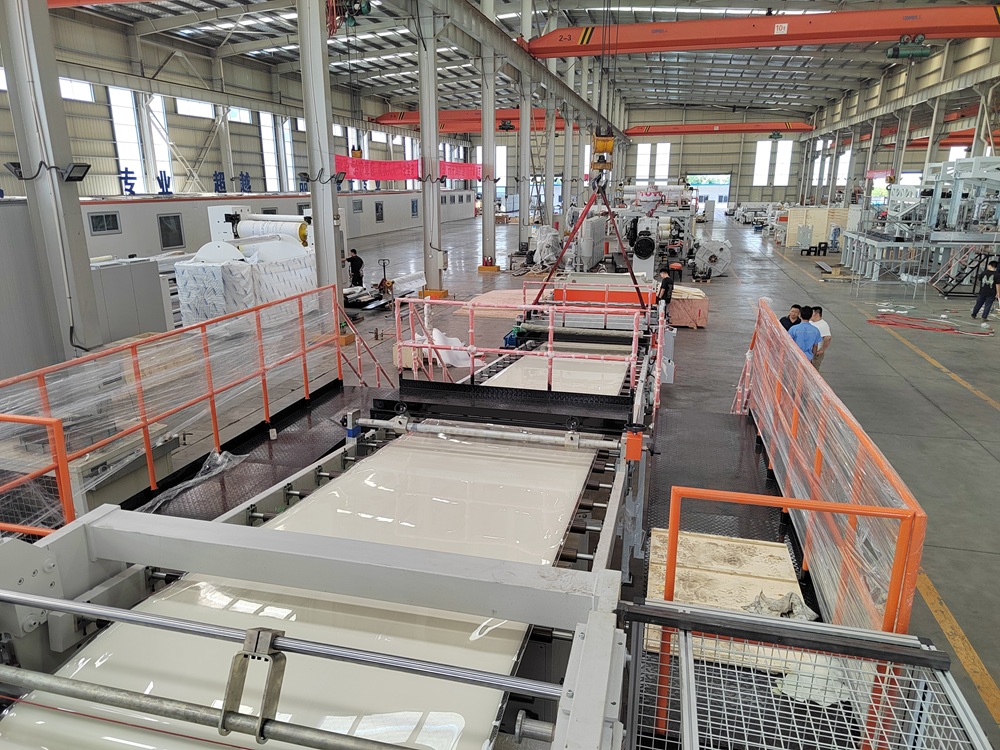The production of PC foam sheets is based on foaming technology, which introduces gases (such as nitrogen, carbon dioxide, etc.) or chemical foaming agents into PC resin to form a uniform microporous structure in the molten state of the resin. During the foaming process, gas expands to form closed or open cell structures, thereby reducing material density while maintaining or enhancing the mechanical properties of the material.
2、 Process flow
raw material preparation
PC resin: Choose high fluidity PC resin to ensure uniformity during the foaming process.
Foaming agent: physical foaming agent (such as supercritical fluid) or chemical foaming agent (such as azodicarbonamide).
Additives: nucleating agents, flame retardants, antioxidants, etc., used to regulate the pore structure and material properties.
Extrusion
After mixing PC resin with foaming agents and additives, melt blend them through a twin-screw extruder.
In the extruder, by controlling temperature, pressure, and shear rate, the foaming agent is uniformly dispersed and micro nuclei are formed.
The extruder die head is designed in the shape of a sheet, controlling the thickness and width of the sheet.
foam molding
Physical foaming: Using supercritical fluid (such as supercritical carbon dioxide) injection technology, gas is dissolved in molten PC under high pressure, and then rapidly depressurized to expand the gas and form bubbles.
Chemical foaming: By heating, the chemical foaming agent decomposes to produce gas, forming a porous structure.
cooling pitching
The foamed sheet is quickly cooled by a cooling roller or cooling water tank to fix the cell structure and prevent collapse.
Traction and cutting
Control the tension and speed of the sheet through the traction device to ensure dimensional stability.
Cut into specified lengths according to requirements.
3、 Equipment composition
Twin screw extruder: used for dispersing foaming agents in the melt blending of PC resin.
Foaming device: Physical foaming uses a supercritical fluid injection system, while chemical foaming uses a heating decomposition device.
Die head and casting system: Control the thickness and surface quality of the sheet.
Cooling and shaping device: cooling roller or cooling water tank, used for rapid solidification of sheets.
Traction and cutting system: Ensure the dimensional accuracy and surface flatness of the sheet.
4、 Application Fields
Construction field
Lightweight insulation board: used for thermal insulation of building walls and roofs.
Skylight panel: High transmittance PC foam sheet can be used for skylights and skylight ceilings.
Transportation
Automotive interior parts: lightweight, soundproof, and heat-insulating materials.
Aviation interior: High strength, low-density materials are used for aircraft cabin decoration.
Packaging field
Cushioning packaging material: It has better environmental protection performance instead of traditional foam plastic.
Electronic and electrical packaging: shockproof and anti-static materials.
Other areas
Advertising display: Lightweight and high-strength advertising boards.
Sports equipment: helmets, protective gear, and other safety equipment.
5、 Development Trends
environmental protection
Develop biodegradable or recyclable PC foam sheets to reduce environmental impact.
Using physical foaming technology instead of chemical foaming agents to reduce volatile organic compound (VOC) emissions.
high-performance
Improving the mechanical properties and thermal stability of PC foam sheets through nanocomposite technology.
Develop composite materials with flame retardant, anti-static, antibacterial and other functions.
Lightweight and multifunctional
Further reduce material density, improve specific strength, and meet the demand for lightweight in fields such as aerospace and automotive.
Integrate multiple functions such as thermal insulation, sound insulation, and electromagnetic shielding to expand application areas.
Intelligent production
Introduce Industry 4.0 technology to achieve automation, digitization, and intelligence of the production process.
Improve product quality and production efficiency through online monitoring and feedback control.









